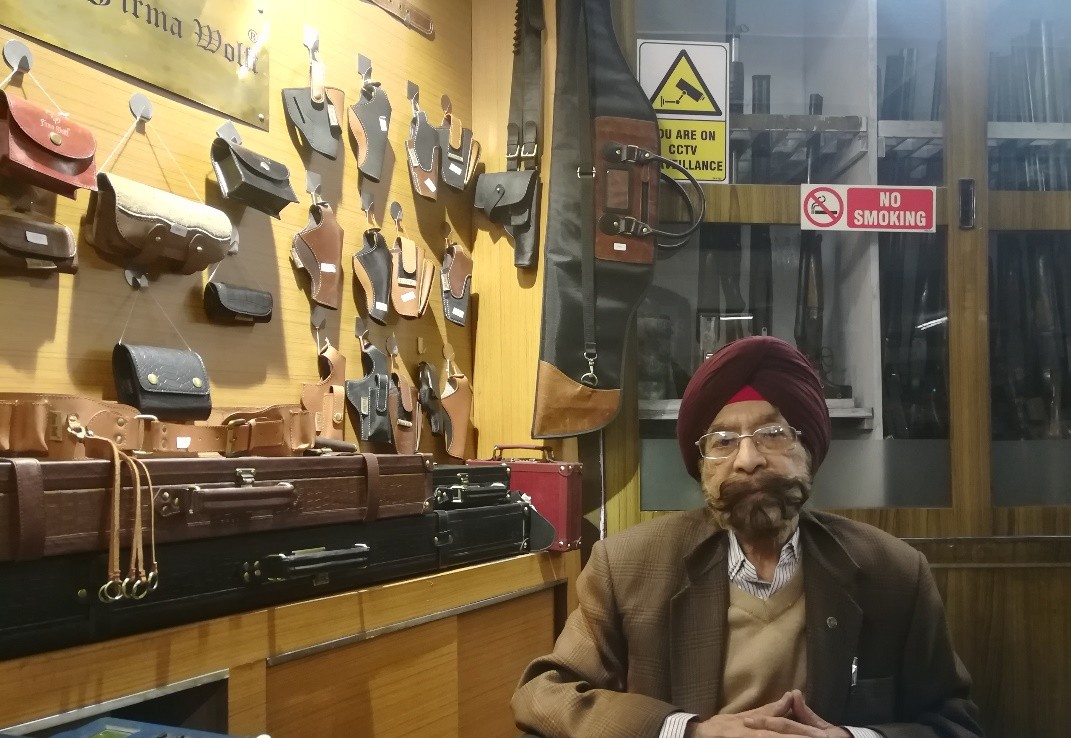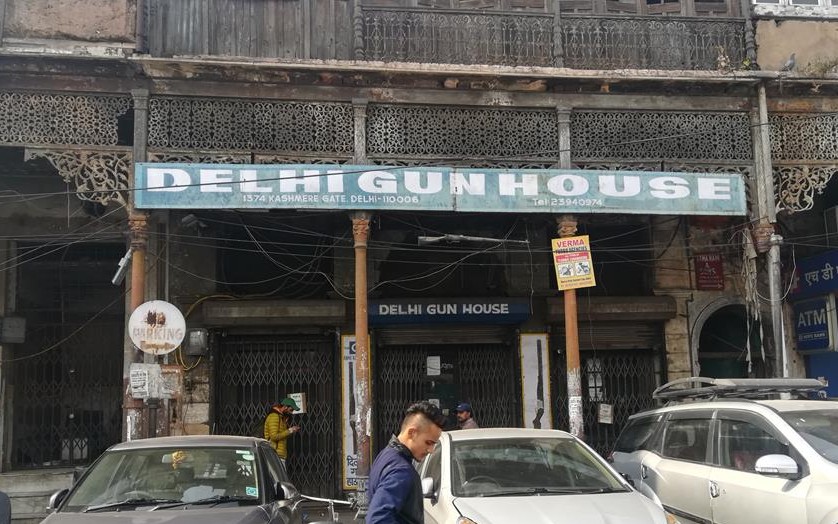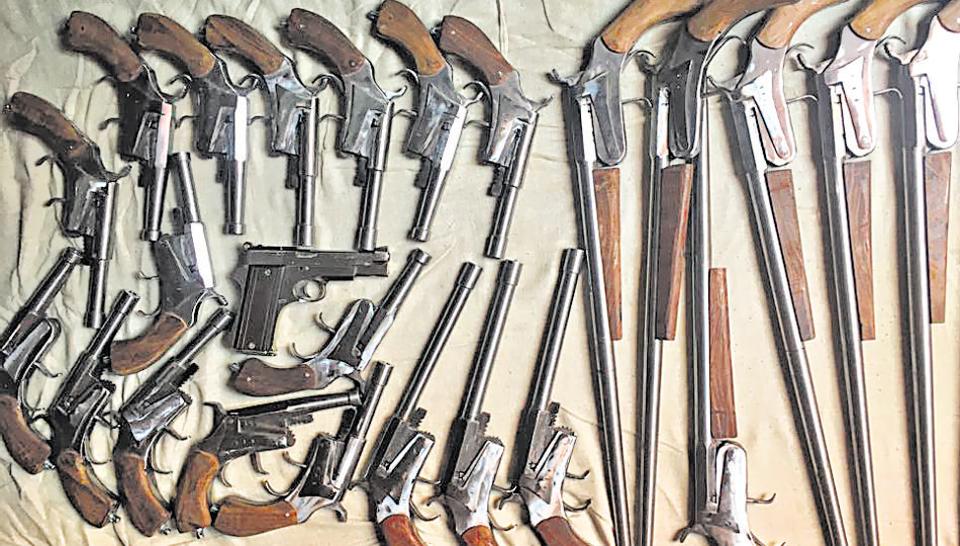

The Capital’s licensed armories are stagnating but sales in illegal weapons continues to surge, a report by Shaurya Singh Thapa
Old Delhi’s Kashmere Gate has had a tryst with arms and ammunition probably since the 19th century. It was in the Revolt of 1857 when Indian sepoys fired a barrage of cannonballs on their British masters. Fast forward to current day and Kashmere Gate is the hotbed of old gun shops in Delhi.
In the vicinity of the St. James Church, there lies Church Road with buildings of faded paint and creaky doors. The whole aura is tempting for anyone of those generic Delhi bloggers. On one side, lies a shop with the words ‘Delhi Gun House’ painted on a rusted metal board. When your eyes shift to the left, there is an array of gun stores, all squished together, waiting for business.
Charan Pal Singh Ghei of Singh Arms Corporation & Accessories and chairman of All India Arms Dealers’ Association gives a detailed history of the armories. He says, the background of most of these is rooted in the partition of India. “Both these sides of the road were lined with colonial gun shops in the pre-independence era. Some of the Muslim gun sellers from here went elsewhere or just left the shops vacant. We were a Sikh family from Pakistan, who came here after the partition.” Ghei’s family started full business from 1951 and the now iconic, Delhi Gun House followed in 1954.

Charan Pal Singh Ghei
Since then, the gun business has changed drastically in India. The ban on issuing new gun licenses in Uttar Pradesh and the Arms (Amendment) Bill 2019 means that lesser people are buying guns now. “People come in to buy more air rifles,” says the proprietor of Delhi Gun House, who also refused to reveal his name. Raja Singh of the Garg Armory says that, “there are still some people who need guns for security which keeps some demand going. We need to keep our products in good condition as sellers, so we take them out once a month and grease them.”
Although, some like Ghei have diversified for the sake of additional profits. “my sons are now mainly involved in the manufacture and sales of gun accessories, which makes for good business.” In fact, the youngest generation of Singh Arms and Accessories has set up a whole company called Firma Wolff dedicated to accessories like gun holsters and bullet pouches.
Getting back to the sales of guns, the consensus of Kashmere Gate elaborated on small weapons being the prime commodity. ‘Revolvers and pistols are easier to carry and better suited for personal security. So I just wish to do off with these long barreled bulky rifles as soon as I can,” says Ghei. Ironically, a customer enters his shop at the same time wishing to sell his grandfather’s rifle as it’s just biting dust at his home. Adding to the misery of the rifle business is the fact that sport hunting is now out of fashion.

Security is the main incentive for buying guns but Ghei also chuckles on how some men and women of means wish to buy weapons just to show them off as status symbols. Since buying them requires a license and obtaining this license takes a few months or more in India.
Definitely, the tedious license and permit work along with other factors affects these little shops but they keep on persisting with their work, come hell or high water. Add this in the bigger picture of old shops and chai sipping spots of Kashmere Gate, and one would feel these shops survive as the remnants of an unchanging grim aesthetic of this transient big city.

Source photo of illegal weapons confiscated by the Delhi Police
Yet despite the odds, the illegal weapon business in going strong in the capital, the number of fire arms seized by the Delhi police increased from 947 in 2016 to 1,950 in 2018 increased from 947 in 2016 to 1,950 in 2018—that’s an alarming spike of 105 per cent in two years. Until May 2019, the Delhi Police had already confiscated 1,081 such weapons.
After the attack in Jamia last afternoonattack in Jamia last afternoon, the Police will have to try harder to crackdown on the illegal supplies of weapons in the country.